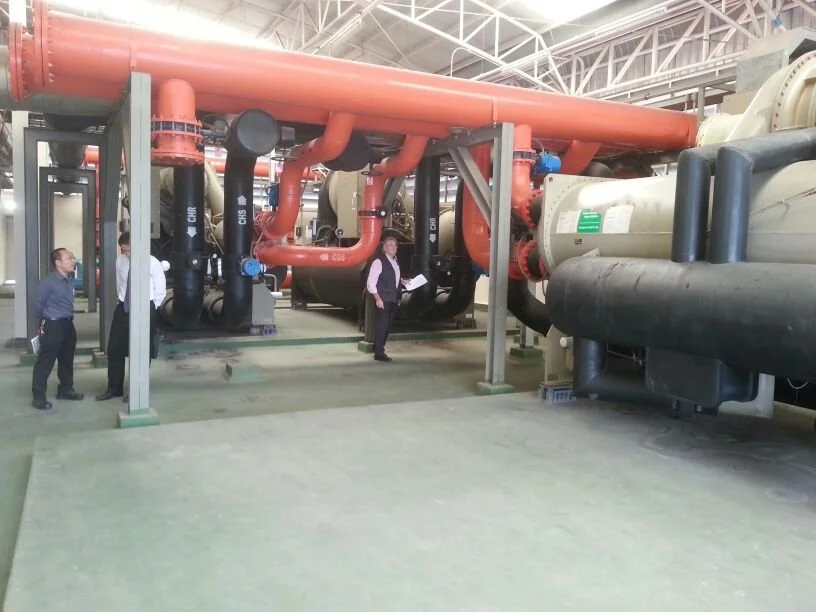Compelling Reasons for Considering a Q-Tank
Ensuring required target temperatures are met constantly, as the process demands
Turbulence reduction supports a higher volume of peak temperatures for the process
Energy cost savings up to 40% and CO2 emissions saving up to 70%
More ‘useable heat’ when compared to a traditional thermal store
Thermal Storage Tank - Current Design
Thermal Storage Tanks are typically open void empty vertical vessels.
High pressure Heat Pumps for this application typically run at target temperature 90°C with return temperatures at 70°C.
CIP (Cleaning in Place) often requires a guaranteed water temperatures at 90°C. Natural stratification dictates the hottest water is at the top of a thermal storage tank, therefore the hot water at 90°C from the heat pump should be fed into the tank at the top.
The temperature at the bottom of the tank is typically 70°C and this is the feed water to the heat pump.
During the tank thermal charging period, the 90°C water will gradually replace the 70°C water over time. As the tank approaches its full thermal store, the 70°C at the bottom will increase, changing the balance of the heat pump beyond the 4:1 ratio. The heat pump will start to unload and the 90°C outlet will start to be compromised and cannot be guaranteed.
Thermal Storage – Q Tank Design
Purpose: Q - Tank thermal storage supports the optimisation of the heat source (ie heat pumps) to match the maximum heat demand. This is achieved by a series of internal manifolds strategically placed within the chamber.
Keys Aspects for an Effective Thermal Storage Vessel.
Diameter to Height Ratio more the 6:1 to achieve the lowest volume of thermocline.
For application where the outlet temperature is critical, simultaneous operation with the heat source (heat pump) and the hot fluid in the thermal store to ensure the maximum demand for hot fluid to the process is maintained.
The quantity of stored thermal energy should be maximised by the physical barrier between the cooler fluid and the hot fluid.
The return temperatures from the process may be higher than the coolest fluid, but not high as the hottest fluid. An intermediate zone should be available in the region of the thermocline where this intermediate fluid is placed.
When working in conjunction with a heat pump, the hot fluid from the heat pump may not always be at the design temperature. A swing valve should divert this fluid to the intermediate zone of the thermal store so as not to degrade the hot fluid temperature stratified at the top of the store.
Turbulence and thermal radiation should be minimal.
Thermal Storage Tank – Q Tank Design - Patent Pending GB2118728.1 - January 2022

